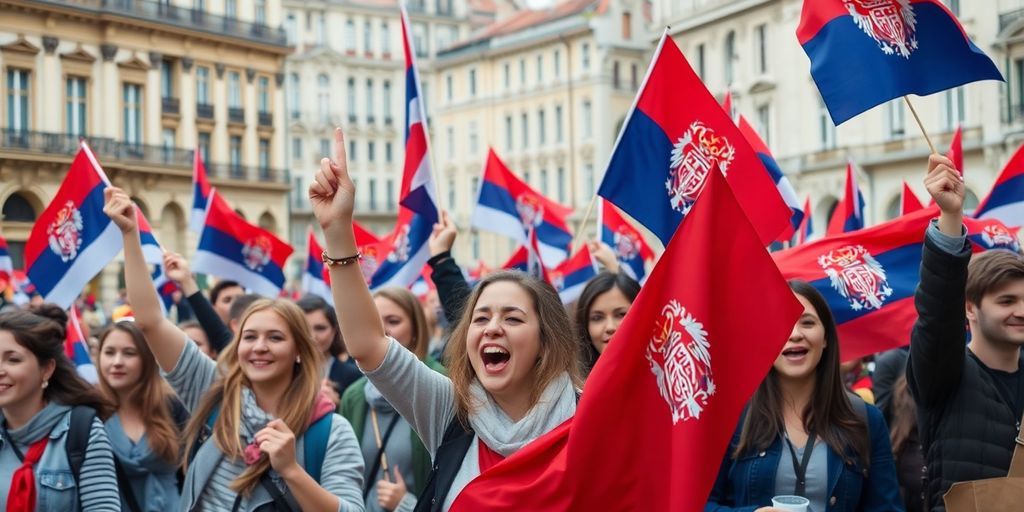In recent weeks, Serbia has witnessed a surge in student protests, igniting debates over national identity and foreign influence. Protesters have been seen waving flags from Russia, China, North Korea, and displaying anti-Kosovo sentiments, while the flags of the European Union and Ukraine have been notably absent. This has raised questions about the underlying motivations of the protests and the implications for Serbia’s geopolitical stance.
Key Takeaways
- Serbian students are protesting against perceived Western influence.
- Flags of Russia, China, and North Korea are prevalent at protests.
- EU and Ukrainian flags are banned, highlighting a divide in national sentiment.
- The protests reflect broader tensions regarding Serbia’s relationship with Kosovo and the West.
Background of the Protests
The protests began as a response to various socio-political issues, including dissatisfaction with the government and its handling of education and employment opportunities. However, they have quickly evolved into a platform for expressing nationalistic sentiments and opposition to Western policies.
The Flag Controversy
One of the most striking aspects of these protests is the choice of flags. While flags from Russia, China, and North Korea are prominently displayed, the EU and Ukrainian flags are conspicuously absent. This has led to several interpretations:
- Nationalism vs. Globalism: Many protesters view the EU as a symbol of Western imperialism, while they see Russia and China as allies against Western influence.
- Support for Kosovo: The absence of Ukrainian flags may also reflect Serbia’s historical and political stance on Kosovo, as Ukraine has supported Kosovo’s independence.
- Cultural Identity: The choice of flags signifies a desire to assert a distinct Serbian identity that resists Westernization.
Reactions to the Protests
The protests have garnered mixed reactions from the public and political leaders:
- Supporters argue that the protests are a necessary expression of national pride and a rejection of foreign interference.
- Critics claim that the protests are being manipulated by political factions to promote anti-Western sentiment.
Implications for Serbia’s Future
The ongoing protests and the symbolism of the flags raise important questions about Serbia’s future:
- Geopolitical Alignment: Will Serbia continue to lean towards Russia and China, or will it seek closer ties with the EU?
- Domestic Policy: How will the government respond to the demands of the protesters, and will it address the underlying issues of education and employment?
Conclusion
The student protests in Serbia are more than just a reaction to local grievances; they are a reflection of the complex interplay between national identity, foreign influence, and the ongoing struggle for political autonomy. As the situation develops, it will be crucial to monitor how these sentiments shape Serbia’s future both domestically and on the international stage.






